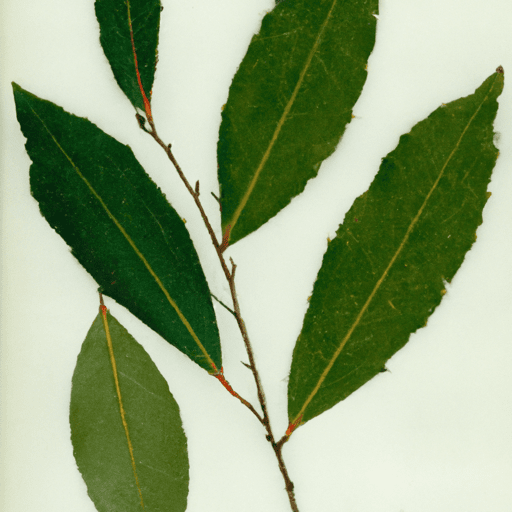Bay Leaf: A Hidden Gem in Your Spice Rack
If you’ve ever found yourself perusing your pantry and stumbling upon a small, fragrant leaf, chances are you’ve encountered the humble bay leaf. Often overlooked, this unassuming ingredient packs a powerful punch when it comes to adding flavor and depth to your culinary creations. Today, let’s delve into the world of bay leaf and uncover its intriguing qualities, from its taste and typical uses to its nutritional value and fascinating history.
Taste and Aroma
Bay leaves possess a distinctive flavor profile that can elevate a dish from ordinary to extraordinary. Their taste is earthy, subtle, and slightly bitter, with hints of floral and herbal notes. When used judiciously, bay leaves lend a pleasant mild sweetness to dishes, amplifying the overall flavor profile.
However, it’s important to note that bay leaves are not meant to be eaten whole; instead, they are used primarily for infusion, imparting their distinctive character to broths, stews, and sauces. These leaves are often added to recipes during the cooking process, allowing them time to infuse their aroma and flavor into the surrounding ingredients.
Common Uses in Cooking
Bay leaves are a staple in many cuisines around the world, including Mediterranean, Indian, and Caribbean. These versatile leaves find their way into a variety of dishes, adding depth and complexity to both savory and sweet creations.
Soups and Stocks: Bay leaf shines in hearty soups and stocks. Its subtle bitterness balances the richness of meat-based broths, while its aromatic properties complement the other ingredients in the pot.
Braising and Slow Cooking: When preparing long, slow-cooked dishes like pot roast or braised meats, bay leaves excel at adding depth and complexity. As the flavors meld together over time, the bay leaf contributes a distinct yet harmonious note to the final dish.
Sauces and Marinades: Whether it’s a rich tomato sauce or a tangy marinade for meats and seafood, bay leaves make an excellent addition. They infuse flavor throughout the cooking process and can be removed before serving.
Baking: Believe it or not, bay leaves can even find their way into baked goods! In some traditional recipes, they are used to flavor custards, puddings, and even bread.
Nutritional Value
While bay leaves are not typically consumed in large quantities, they still contain a range of beneficial compounds. These include minerals like calcium, manganese, and iron, as well as vitamins A and C. Additionally, bay leaves boast antioxidants and volatile oils that may provide certain health benefits, such as anti-inflammatory and digestive support.
Anecdotes and Historical Significance
The use of bay leaves in cooking dates back thousands of years, tracing its origins to ancient Greece and Rome. In these ancient civilizations, bay leaves held religious and symbolic value. They were also believed to possess protective properties, warding off evil spirits and promoting good fortune.
Bay leaves have found mention in various legends and myths throughout history. The ancient Greek poet, Homer, wrote about the “laurel crown” made from bay leaves as a symbol of honor and victory. The esteemed Roman poet, Virgil, spoke of the mythical powers of the bay tree.
Today, bay leaves continue to be highly regarded in culinary traditions. Whether it’s a classic French bouillon, an aromatic Indian curry, or a comforting Italian ragu, bay leaves find their place in kitchens worldwide, weaving their subtle magic into countless dishes.
Conclusion
Don’t let their unassuming appearance fool you; bay leaves are a secret weapon in the kitchen. Unlocking their potential can elevate your culinary creations to new heights, adding a layer of complexity and aromatic charm. So go ahead, experiment with this versatile spice, and let the flavorful wonders of bay leaves enchant your taste buds.
Bay Leaf
Origin: Bay leaf, also known as bay laurel, belongs to the family Lauraceae. It is native to the Mediterranean region and has been cultivated for thousands of years. The scientific name is Laurus nobilis.
Common Uses: Bay leaf is a popular herb used in various cuisines around the world. It is commonly used to flavor soups, stews, stocks, sauces, and rice dishes. It imparts a subtle, aromatic flavor to dishes and is often added whole during cooking, then removed before serving.
Nutritional Benefits: While bay leaves are not usually consumed in large quantities due to their strong flavor, they do contain several beneficial compounds. They are a good source of antioxidants, such as vitamins A and C, which help protect the body against oxidative stress. Bay leaves also contain minerals like calcium, iron, manganese, and potassium.
Unique Properties: In addition to its culinary uses, bay leaf has some unique properties. It contains essential oils, including eugenol, which gives it its distinctive aroma. These oils have antifungal and antibacterial properties and may help with digestion. Bay leaf is also believed to have mild sedative and anti-inflammatory effects.
Historical Significance: Bay leaf has a long history of use in various cultures. In ancient Greece and Rome, bay leaves were considered a symbol of honor and victory. They were used to make wreaths worn by Greek and Roman emperors, poets, and athletes. Bay leaves were also believed to have mystical properties and were used in rituals and as a remedy for various ailments.
Note: While bay leaf is generally safe to consume, it should not be eaten whole, as it may pose a choking hazard. It is best to remove the bay leaves before serving the dish.




Use the share button below if you liked it.
It makes me smile, when I see it.